| |
|
| |
 |
| |
Persimmon Leaves Front and Back |
Identification:
In fall the leaves of the Persimmon are yellow-green. The leaves are
simple,
alternate,
entire, glossy above and paler beneath. Each leaf
is between 4 inches and 6 inches long. Note the
alternate branching on this tree.
| |
|
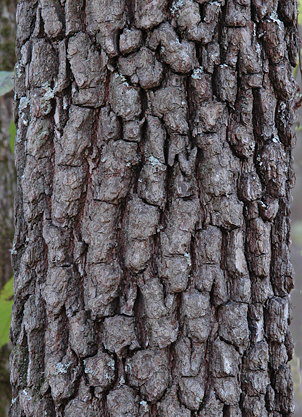 |
|
|
Persimmon Bark |
The bark of the Persimmon is one of
its best identifying characteristics. The bark is dark gray to
black, up to 1 inch thick, and develops into thick square blocks
divided by deep dark orange fissures.
The twigs of the Persimmon are
slender and gray to reddish brown in color. The lenticels are
orange.
| |
|
| |
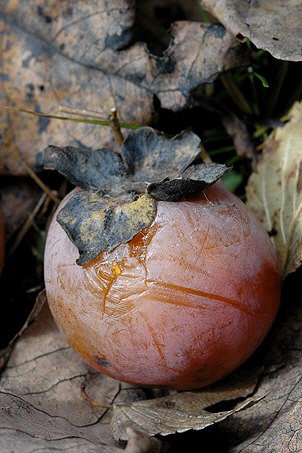 |
| |
Persimmon Fruit |
The Persimmon
is justly famous for its fruit. The berries are slightly over
an inch in diameter. The flesh is orange-colored, and when
ripe, delicious.
The scientific name
of the persimmon is Diospyros virginiana. The genus name,
Diospyros, comes from the two Greek words; Dios, which refers to the
Greek god Zeus, and pyros, for “wheat”. Translated freely, it means
“food of the gods.” The fruit is famous both
for how tasty the
fruit is when it is ripe, and how mouth-puckering it is when it is
not ripe. Captain John Smith said of the Persimmon he first tasted
near Jamestown, "If it be not ripe, it will draw a man's mouth awrie
with much torment." To be good to eat, the skin must be
wrinkled and the fruit must be mushy and almost falling apart. The
Spanish explorer DeSoto is said to have described the fruit as a
“delicious little plum.” It was made into bread by the Native
Americans, and also dried and stored. The Lanape Indians called it
pasimenan, a name that has been translated as “persistent fruit.”
It has been made into jellies and syrups, and during the Civil War
confederate soldiers boiled the seeds to make a substitute for
coffee.
| |
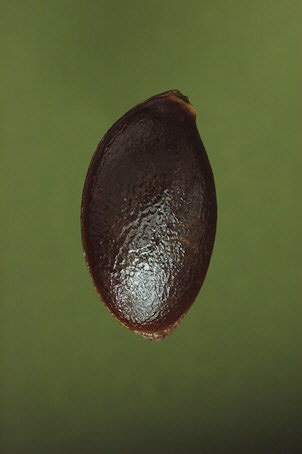 |
|
Persimmon Seed |
| |
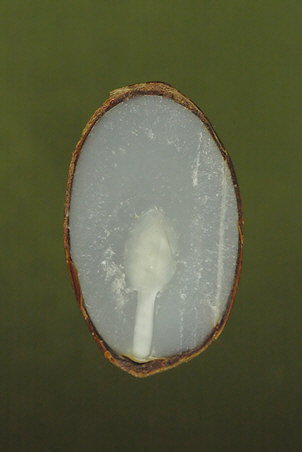 |
|
Persimmon Seed "Spoon" |
Other Uses
and Lore:
A variety of
wildlife feast on the fruit. Birds, including the northern
bobwhite, are known to eat it, and it is relished by flying
squirrels, foxes and white-tailed deer. Most famously, it is
enjoyed by the opossum. When John James Audubon painted his
portrait of the opossum, he chose to show it high in a persimmon
tree. Look along the trail for persimmon seeds – they are
often found in the scats.
If you find a
persimmon fruit, you can (with adult supervision) split the seeds
lengthwise with a sharp knife to see the white kernel inside.
According to folklore you can forecast the severity of the coming
winter by the shape of the kernel. If the kernel is shaped
like a spoon (or shovel) there will be lots of snow. If it is
shaped like a fork, a mild winter is to be expected. If it is
shaped like a knife, expect bitter, cutting winds.
The Trail From
Station Three to Station Four
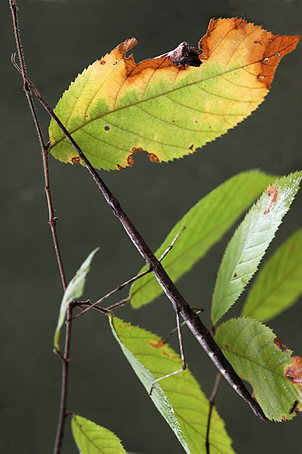 |
|
Walking Stick on Eastern
Hophornbeam |
The trail
descends gradually from Station Three to Station Four. Look
for Persimmon seeds in scats on the surface of the trail On
warm days, you may still see many insects on the foliage of the
trees that you pass. Walk slowly and take your time checking
the leaves and branches. If you're fortunate, you may
encounter a Walking Stick or a Wheel Bug. After walking a short distance, you will
come to the marker for Station Four on the left side of the trail.
|

